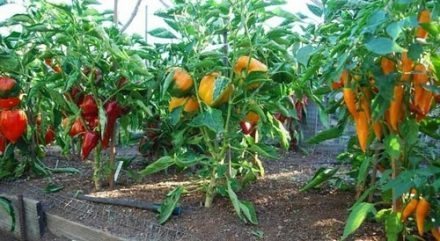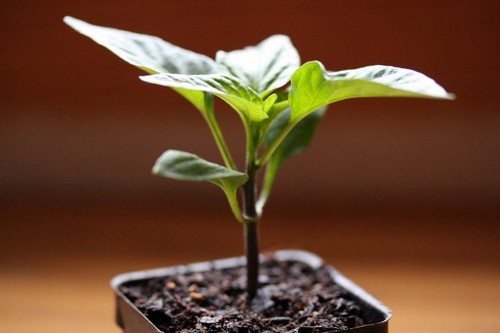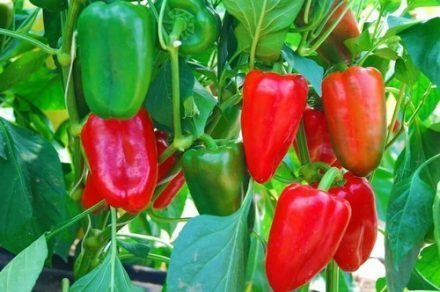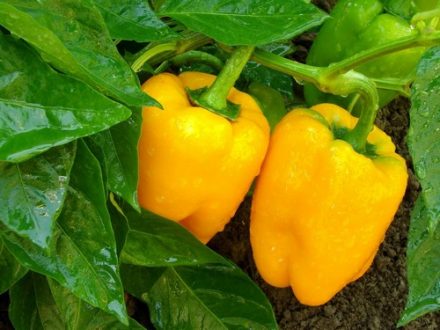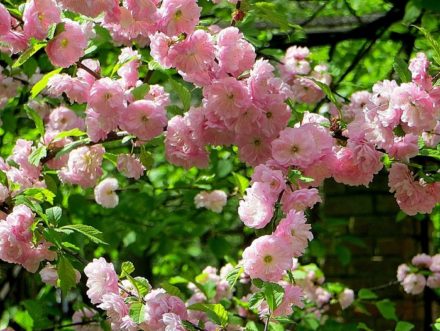Peppers have a long growing season, so they are usually grown as seedlings. Transplanting seedlings into the ground is a responsible undertaking, on which the further development and productivity of the crop largely depends. Seeds are sown at home in February; seedlings should be planted in the garden after the threat of frost has passed. Vegetables are planted in the greenhouse 2 weeks earlier. When landing, 6 important actions are required.
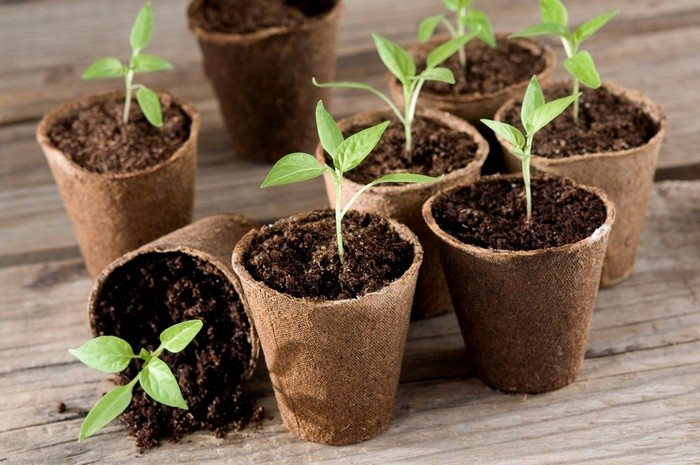
Choosing a suitable location
Since pepper is a heat-loving crop, it is advisable to plant it in a greenhouse, but not everyone has this opportunity. When choosing a place for a garden bed in open ground, it is better to stay on the site on the south side of the house. It is important to provide the pepper with protection from cold winds.
Tall crops such as sunflower and corn can also take on a protective function. You can plant peppers on the south side of a fence or hedge. At the same time, the rules of crop rotation are taken into account. Good predecessors for pepper would be:
- leguminous plants;
- pumpkin crops;
- all types of cabbage;
- any root vegetables.
You cannot plant vegetables after representatives of the nightshade family - tomatoes, potatoes, eggplants. Otherwise, the risk of disease increases, which will negatively affect yields.
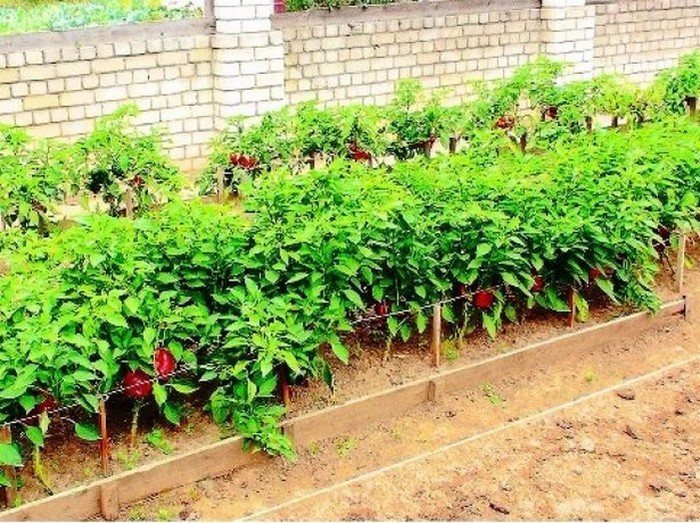
Fertilizer application and soil disinfection
Peppers like fertile soil. Organic fertilizers are usually applied when preparing beds in the fall. In spring it is necessary to add mineral mixtures. For every sq. m add:
- 40 g superphosphate;
- 20 g ammonium nitrate;
- 30 g of potassium sulfate.
Planting in fertile soil is the key to a bountiful harvest. The soil must first be disinfected. For this purpose, treatment is carried out with boiling water. A more reliable way is to use a solution of copper sulfate (1 tablespoon per 10 liters of water). Disinfection is carried out a week before planting seedlings.
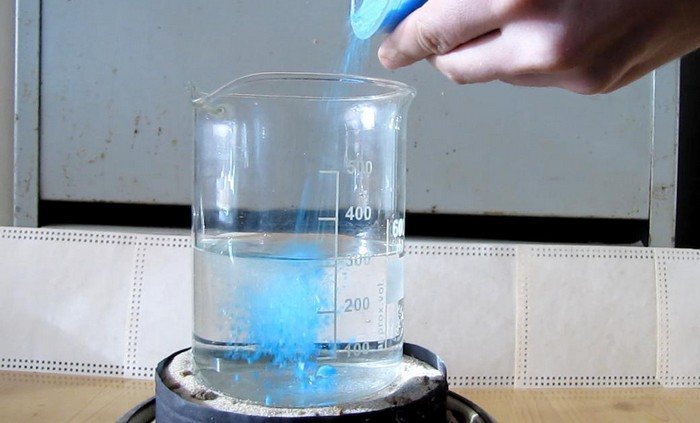
Carefully removing seedlings from containers
Peppers have a very delicate root system that reacts painfully to damage. It is for this reason that it is better to grow plants without picking, immediately planting the seeds in individual containers.
On the eve of transplanting into the ground, the seedlings are watered so that the soil forms a single lump and does not crumble. It’s even better if the peppers were planted in peat pots. In this case, there is no need to free the roots. You just need to slightly tear the peat shell, then it will dissolve itself in the ground, becoming additional food for the plants.
When transplanting, seedlings are taken out of plastic cups, trying not to destroy the earthen ball around the roots, and transferred to the prepared hole. Careful planting will allow plants to quickly adapt to a permanent location and develop normally in the future. If the roots are damaged, the plant will become sick and fruiting will be delayed.
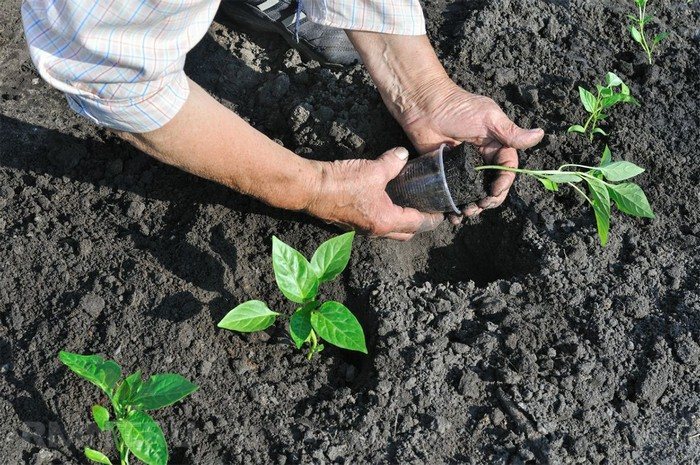
Compliance with the planting pattern
Success in growing peppers largely depends on following the planting pattern. Plants planted at a certain distance will receive enough moisture and nutrients and be well illuminated by the sun. Thickened plantings, on the contrary, will provoke a deficiency of nutrition and moisture.Violation of the planting pattern can cause an outbreak of fungal diseases due to deterioration of air circulation.
The spacing between plants depends on the variety. Tall varieties are planted at a distance of 50 cm from each other. The width between rows in this case should be 70 cm. For compact peppers, the interval is 40 cm, and the rows are located at a distance of 50-60 cm. Too sparse planting will also have an adverse effect on the peppers. The fruits will be baked by the sun's rays.
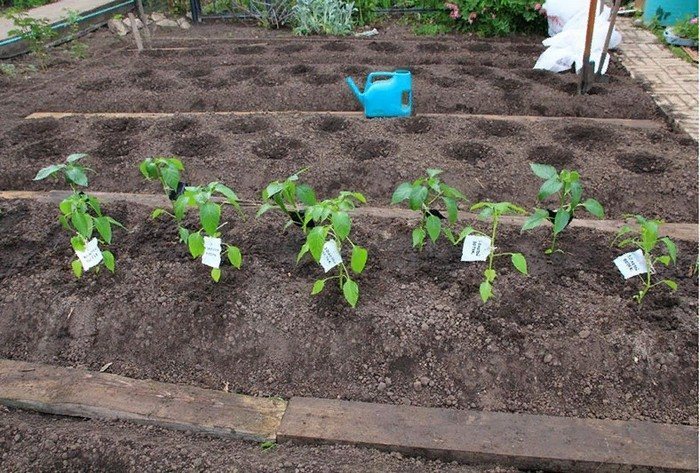
Watering the holes with warm water
Just before planting, the dug holes are watered with warm water. This technique will help warm up the soil at the planting depth, and the plants will experience less stress. Peppers also need moisture during the rooting process. At first, you will need to ensure that the soil always remains slightly moist.
Pour 1–2 liters of water heated to 45–50 °C into each hole. Then wait until the moisture is completely absorbed into the soil. After this, you can plant the peppers, carefully holding them by the base of the stem. Place the plants vertically in the holes. It is especially necessary to pour warm water over the soil when planting weak seedlings.

Deepening when planting
It is better to plant peppers slightly below the level of the first root. Deepening will stimulate the development of adventitious roots. As a result, the plants will be able to extract more nutrition and moisture from the soil and will begin to develop better.
If buds have formed on the plants by the time of transplantation, they should be torn off. Peppers should not waste energy on flowering and forming ovaries at this stage. Later, the plants will make up for lost time.When planting tall varieties, they are immediately tied to a support, placing individual pegs nearby.
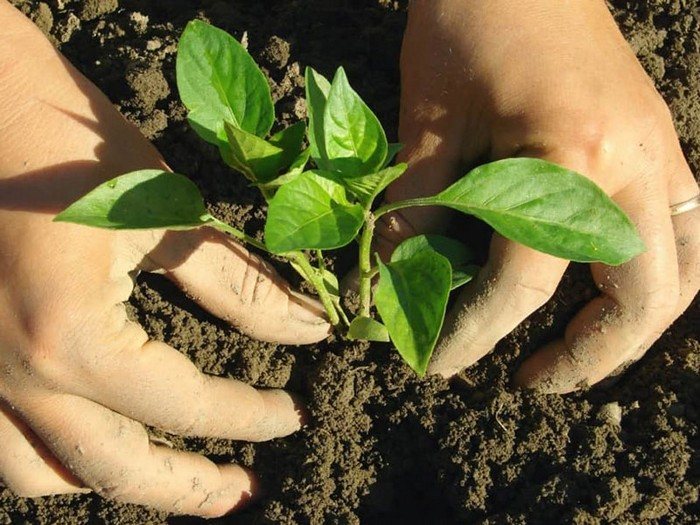
The further development of the crop depends on how correctly the transplantation into the ground is carried out. It is necessary to comply with the timing of the event, prepare the bed in advance, and adhere to the correct planting pattern. In the future, all that remains is to care for the peppers and prepare for harvesting a generous harvest.


